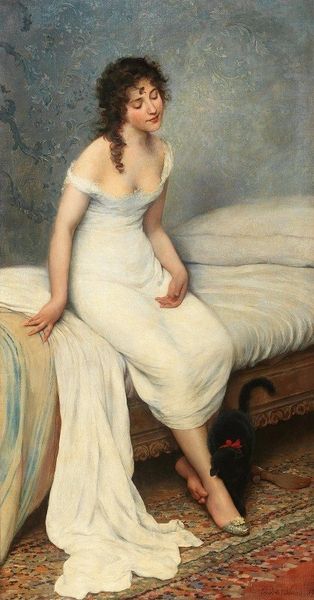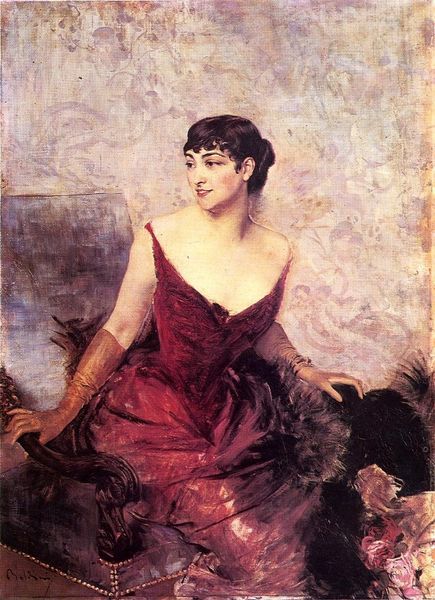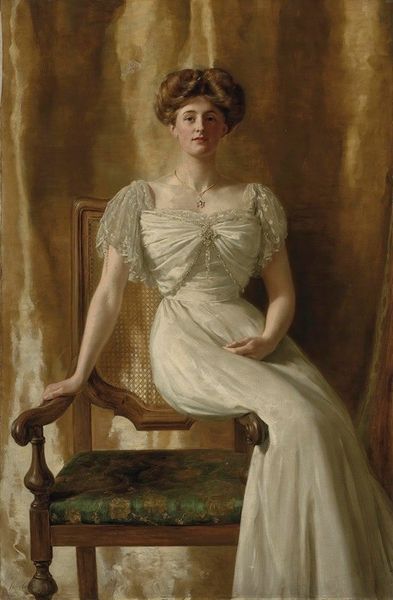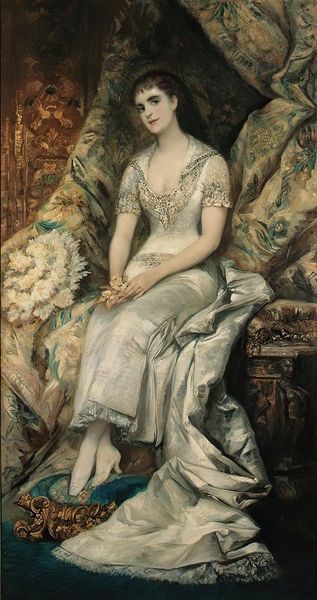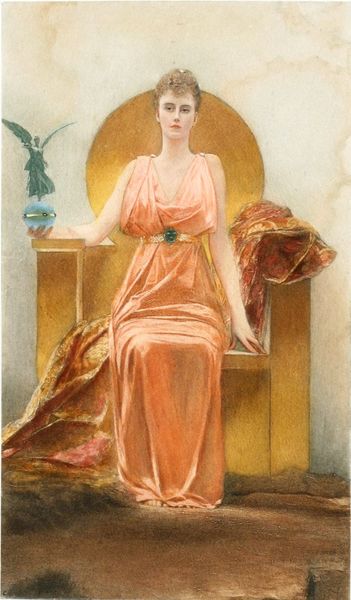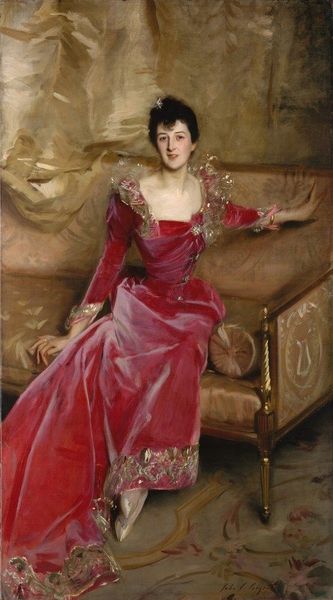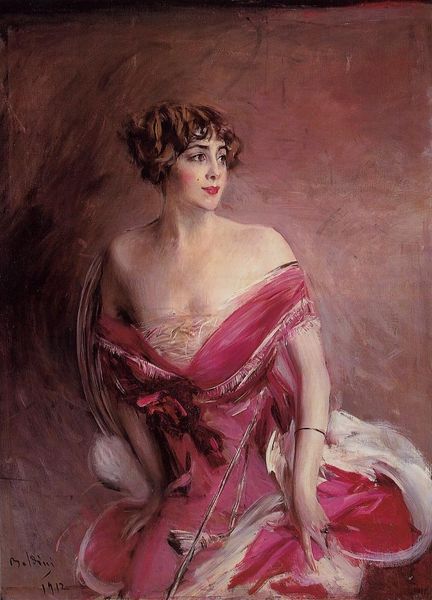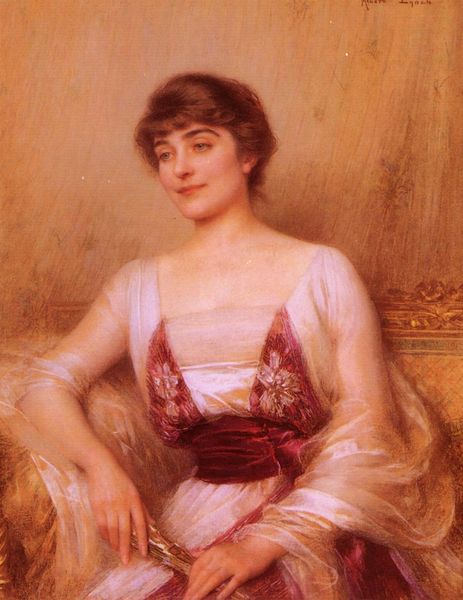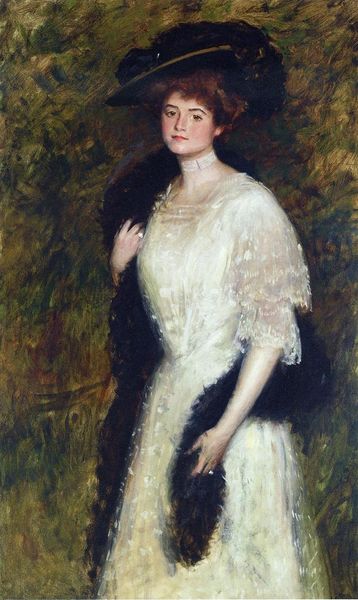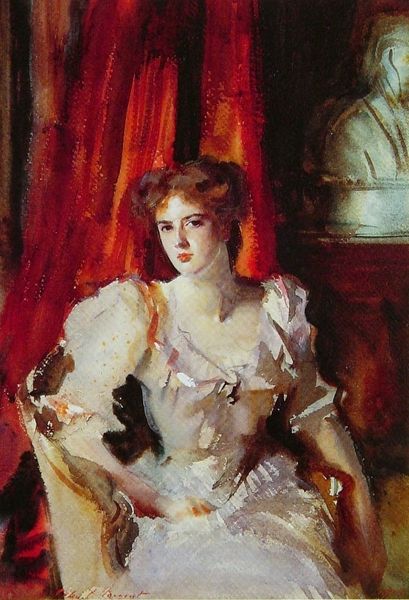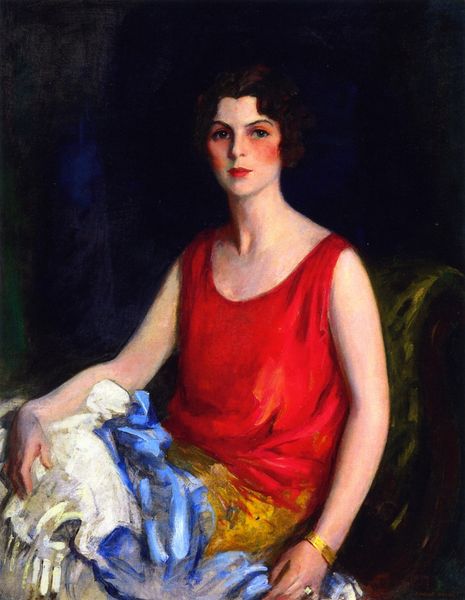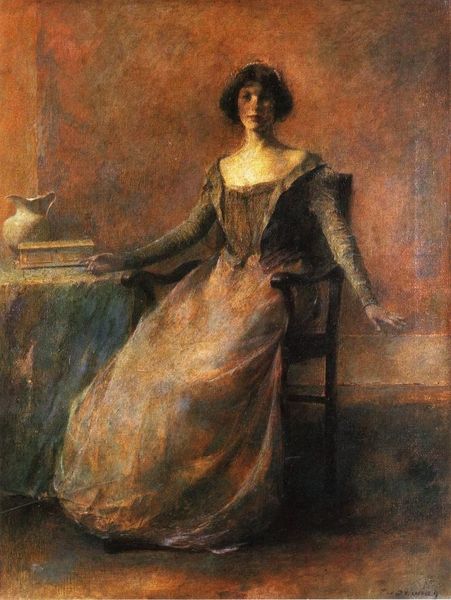
Copyright: Public domain
Editor: Here we have Antonio de La Gándara’s "Portrait of the Actress Jane Renouardt" from 1913. It’s a striking image in its simplicity, a figure in white and red against a muted backdrop. What do you see in this piece? Curator: I see a careful construction of identity at a fascinating intersection of art, celebrity, and the burgeoning role of women in early 20th-century society. Think about what it meant for an actress to be portrayed in this style during this period. Was the artist complicit to reinforce cultural norms? Editor: I hadn't considered that! So, it’s not just about aesthetics, but about power dynamics and representation? Curator: Precisely. How does Renouardt's attire– a sort of classical drape – play into ideas about feminine ideals at the time, while still alluding to modern fashion? It feels purposefully ambiguous. Is she being objectified, or is she claiming ownership of her image? Editor: I guess the seemingly simple composition masks a much deeper conversation about women’s roles and visibility. It's more than just a portrait. Curator: Absolutely! Consider also how the artwork participates to societal gender norms while reflecting Renouardt's profession as an actress, and the historical relevance of Paris’ vibrant theater culture during that time. Does the gaze empower the actress, the artist, or the viewer? Editor: That's a lot to unpack! The painting seemed straightforward at first glance, but now I see the complex social issues it brings to light. Curator: And that's where art becomes truly exciting, right? When we begin to question the narratives it presents and the roles it assigns. Editor: Definitely. I'll never look at a portrait the same way again!
Comments
No comments
Be the first to comment and join the conversation on the ultimate creative platform.


